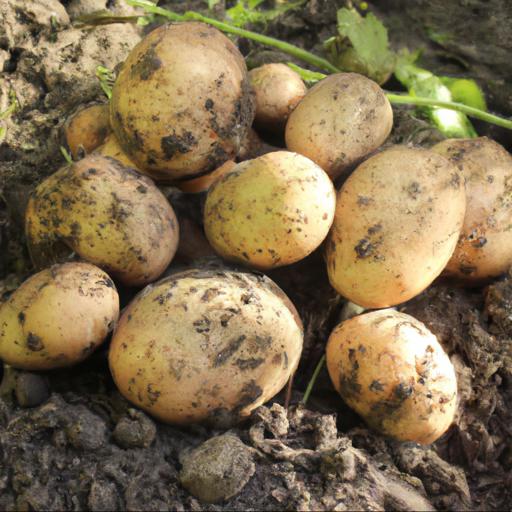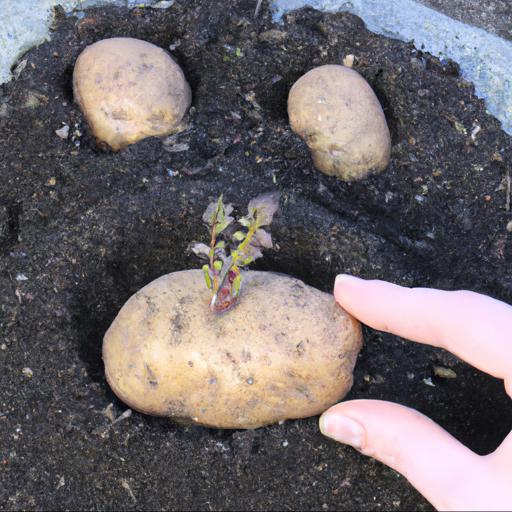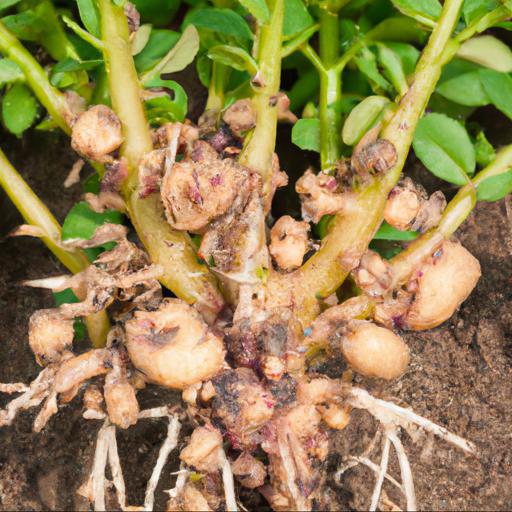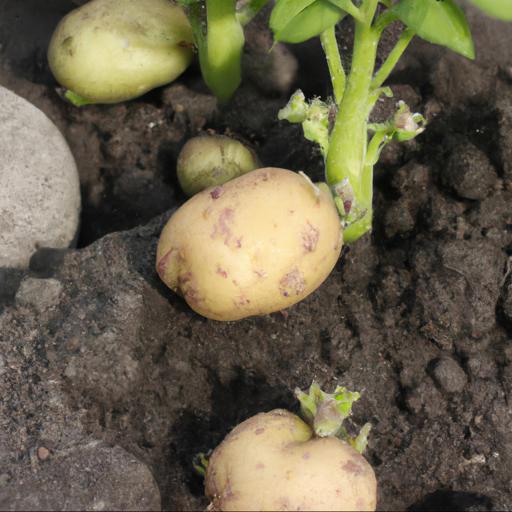Are you looking for a way to get an early start on your potato harvest? Planting second early potatoes is an excellent way to get a head start on the season. Second early potatoes are fast growers, maturing in as little as 8-10 weeks, and are ideal for small gardens or allotments.
They are also well suited to growing in containers, making them a great option for urban gardeners. With their high yields and early maturity, second early potatoes are a great way to get a jump start on the growing season.
Benefits of growing second early potatoes

As a UK gardening expert, I often recommend that people consider planting second early potatoes in their garden. This type of spud is a great choice for a number of reasons! In this article, I will provide some compelling reasons why you should plant second early potatoes in your garden.
Growing second early potatoes can be beneficial for a number of reasons. Firstly, they mature quickly, meaning that you can harvest them much sooner in the season than you would with other potato varieties.
Generally, they take less than 10 weeks to reach a harvestable size, making them a popular choice amongst gardeners who want to quickly enjoy the fruits of their labour. Secondly, second early potatoes are often more versatile than other potato varieties and can be used in a wide variety of dishes. Whether you’re looking for a hot and hearty potato bake, a colourful mash, or a simple plate of oven-fried chips, second early potatoes have got you covered.
Finally, growing second early potatoes can be both cost-effective and eco-friendly. These spuds generally take up less space in the garden than other potato varieties and can be planted in a smaller garden plot.
Not to mention, they produce more usable, edible potatoes per crop than other varieties so you can rest assured that you’re getting the most from your effort and resources. And since they’re ready to harvest sooner, they’re also less susceptible to bad weather or other unexpected circumstances that can cause crop failure. In conclusion, second early potatoes are an excellent choice for gardeners who want quick results and who want to save money and resources.
They mature quickly, they’re versatile, and they’re cost-effective and eco-friendly. Planting second early potatoes in your garden is sure to be one decision that you won’t regret!
Tips for growing second early potatoes

Growing second early potatoes in your garden can be a great way to enjoy delicious, freshly grown varieties throughout the summer – just a few weeks after the first earlies have finished. Third or late earlies and maincrop varieties may take longer to mature, but there is much to like about the quality and speed of a really good second early. When it comes to choosing the right variety of second early potato, there are several things to take into account.
Early potatoes often have thin skins and they cook quickly, making them excellent for salads and boiled potatoes. Good examples of second early varieties include Desiree, Red Duke of York and Arran Pilot.
Many gardeners favour either second earlies or maincrop varieties as they tend to store better at the end of the season, so weigh up carefully when selecting your potatoes. Another important factor when planting second early potatoes is the soil. Potatoes thrive in humus-rich, free-draining soils, so be sure to add plenty of organic matter such as compost, leaf mould or well-rotted manure to your beds.
It’s best to dig the soil to a good spade’s depth and remove any surface stones or clumps of turf. Finally, make sure to give the potatoes sufficient water to ensure healthy growth and good yields.
Common problems when growing second early potatoes

and must contain a minimum of 50 wordsGrowing potatoes can be a rewarding yet challenging experience. Second early potatoes are a great choice if you’re keen to have potatoes ready in your kitchen garden a bit sooner than later. While there are a number of varieties to choose from, they all come with common growing challenges you will have to prepare for.
The key to a successful crop of second early potatoes is to create a well drained soil. This allows the potato plants to reach out exploring for nutrients.
Be sure to work in some compost or manure to enhance the soil because potatoes are heavy feeders and need extra help to reach their full potential. A soil temperature of 7 to 10degree Celsius is also mandatory for the development of healthy potatoes.
Pests and diseases tend to be an issue with potatoes. Keep an eye out for the likes of blight and potato cyst eelworm which can damage and eventually ruin plants. To avoid pests, you should rotate your potatoes to another location every year.
Weeds can also be a problem, so regular hoeing and hand pulling are necessary to reduce their numbers. The main thing is to ensure your second early potatoes have everything they need to be happy and healthy, so give them the right amount of water, food, sunlight, and the correct temperature.
By letting yourself be guided by these rules, you should soon have a startling crop of potatoes waiting to be dug up and enjoyed.
Conclusion
This article has discussed the benefits of growing second early potatoes. They are fast-maturing, disease-resistant, and have a high yield.
Growing second early potatoes is a great way to enjoy a tasty and healthy crop in a short period of time. With the right care and attention, second early potatoes can provide a delicious and nutritious harvest.
FAQ
What are the benefits of growing early potatoes?
The benefits of growing early potatoes include having a crop ready for harvest earlier in the season, being able to enjoy the potatoes sooner, and having a higher yield of potatoes due to their shorter growing season. Additionally, early potatoes are less susceptible to disease and pests, making them easier to grow.
What are the best varieties of early potatoes to grow?
The best varieties of early potatoes to grow are ‘Rocket’, ‘Swift’, ‘Maris Peer’, ‘Charlotte’, ‘Arran Pilot’, and ‘Kestrel’.
What is the best soil type for growing early potatoes?
The best soil type for growing early potatoes is a well-drained, light, loamy soil with a pH of 5.5 to 6.5.
How long does it take for early potatoes to mature?
It typically takes early potatoes about 70-90 days to mature.
What is the best way to store early potatoes?
The best way to store early potatoes is to keep them in a cool, dark, and dry place with good air circulation. They should also be stored away from other fruits and vegetables, as they can absorb odors and flavors from them.
What are the common pests and diseases that affect early potatoes?
Common pests and diseases that affect early potatoes include blight, Colorado potato beetle, wireworms, potato scab, and aphids.

